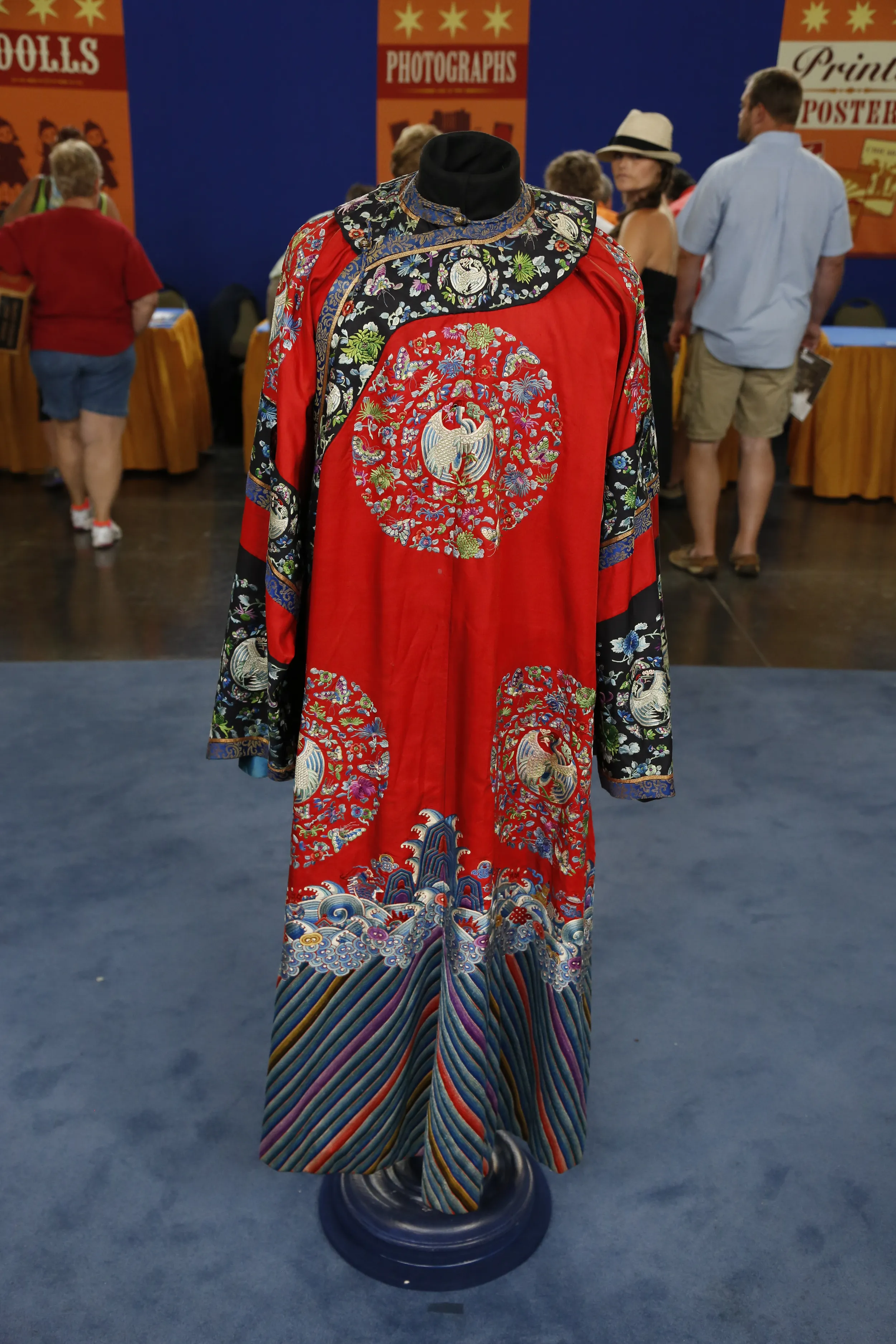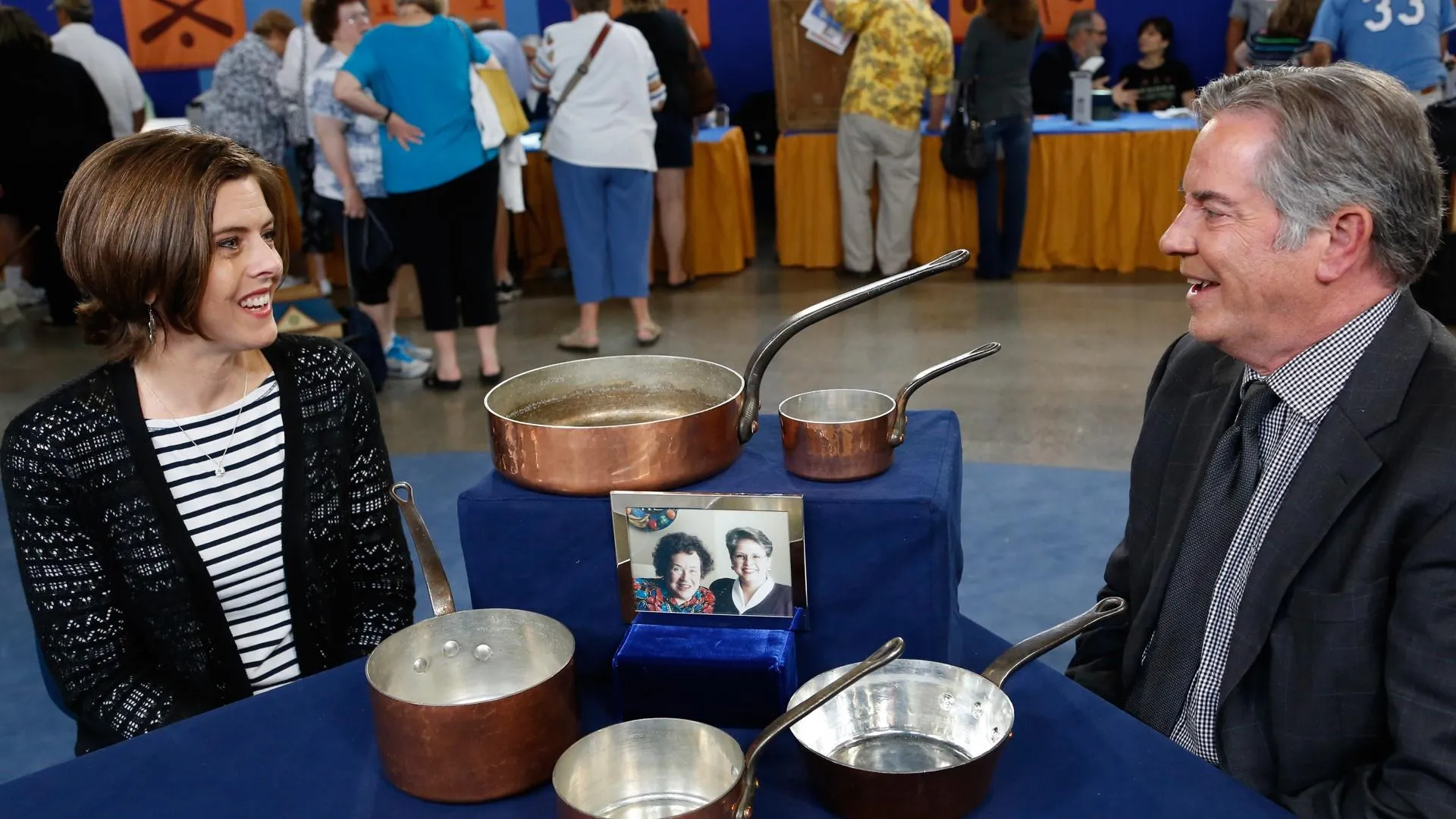GUEST: We have some friends of the family who do estate sales. About five years ago, they had a particular sale coming up she wanted me to assist her with. And they had a lot of Asian and Japanese, Chinese antiques because they traveled frequently. And so when I was helping her work the sale, I saw this and it immediately caught my eye because I'd never seen anything like it before. And I decided that I want it, so I got it.
APPRAISER: Well, it's a wonderful robe, and one of the things that's the best about it is its condition.
GUEST: Oh, really?
APPRAISER: Generally in the shoulders particularly, these things wear out. And the robe is dateable, and it's dateable particularly by that strip that's on the bottom.
GUEST: Oh really, okay.
APPRAISER: That they call lishui. And what happens is in terms of embroidery, that technique is very, very easy to do, so the earlier robes do less of it and the later robes do more of it because it kind of is a cost-cutting effect.
GUEST: All right.
APPRAISER: About how old do you think it is?
GUEST: Probably about 1880.
APPRAISER: 1880, okay. And it was for a festival, like either a birthday or a wedding, and that's because of the cranes that are on there. They're the symbols of longevity. And the fact that they're in a roundel also means that it has an association with someone who had a claim to be a member of the imperial family.
GUEST: Wow.
APPRAISER: Not a high-ranking member of the family, just one of the family.
GUEST: All right.
APPRAISER: The thing about the production of these things: in China, mostly polygamous households, particularly upper class households, so no one got rid of the mothers when the father died. So there'd be many women around the house who'd be doing nothing but embroidery and cooking in the household.
GUEST: I see.
APPRAISER: So they'd be producing things like this in vast quantities for usage for the family.
GUEST: Right.
APPRAISER: The higher the status, the less they'd wear a robe twice. The emperor never wore a robe more than once. The birds and the flowers and the butterflies that are all over the piece are just beautifully embroidered. What did you pay for the robe?
GUEST: I believe they had it priced at around $500. I worked for the sale and the remainder that I didn't work during the sale I paid them. It still came out to around the $500 that they were asking, maybe a little bit less.
APPRASIER: So you basically exchanged pay for the robe.
GUEST: Right, exactly.
APPRAISER: I would expect at auction for this robe to sell for at least $6,000.
GUEST: Oh, wow.
APPRAISER: These robes are very, very, very popular. It's a magnificent robe.
GUEST: Yeah, it's beautiful.












